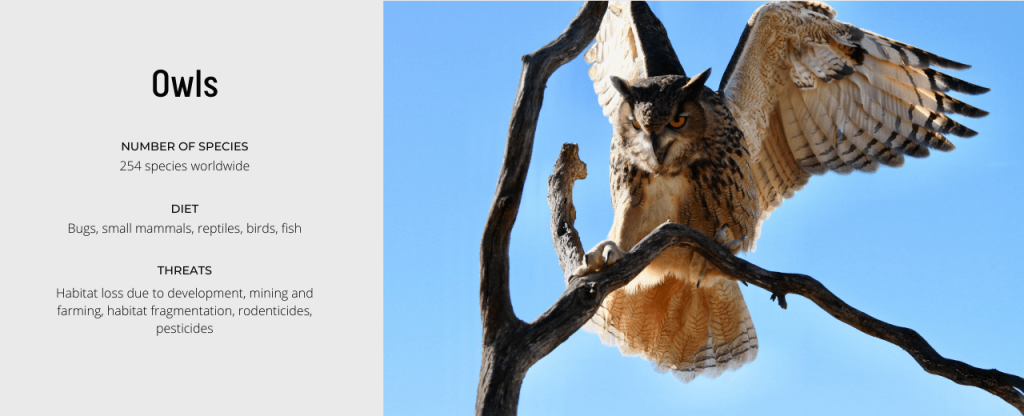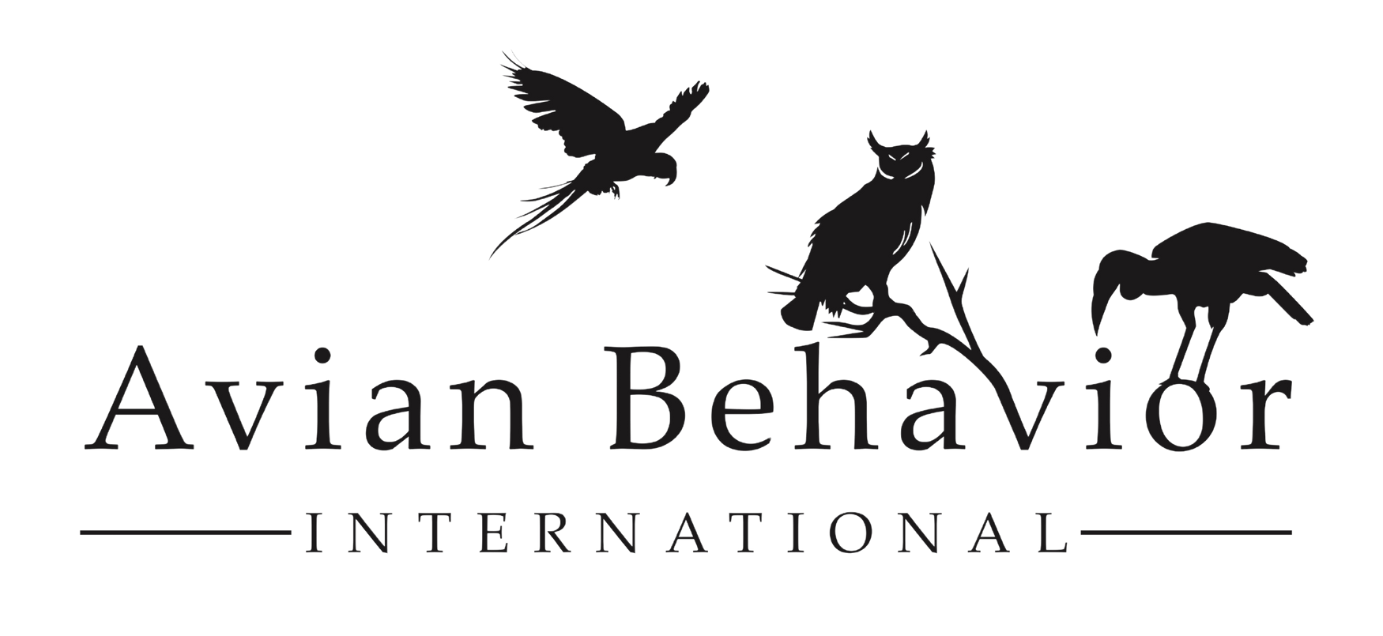Owls


NUMBER OF SPECIES
254 species worldwide
DIET
Bugs, small mammals, reptiles, birds, fish
THREATS
Habitat loss due to development, mining and farming, habitat fragmentation, rodenticides, pesticides
Who They Are
- Guinness: Eurasian Eagle Owl (Bubo bubo)
- Ripley: Spectacled Owl (Pulsatrix perspicillata)
- Beatrix: Barn owl (Tyto alba)
- Tina: Burrowing owl (Athene cunicularia)
- Nigel: Eastern screech owl (Megascops asio)
- Aldo: Great horned owl (Bubo virginianus)
Where They Originate
Owls are one of the most iconic raptors on the planet. There are nineteen species of owl in North America, with seven species found in San Diego County. We may be most familiar with the great horned owl and the barn owl, and the avid outdoors person with a keen ear can find the Western screech owl, burrowing owl, short eared owl, long eared owl, and Northern sawhet owl. Occasional visitors include the flammulated owl.
Barn owls like Beatrix are found on every continent in the world except for Antarctica. Spectacled owls such as Ripley are a neotropical owl living in Mexico and south through Central and South America. And our big beautiful Eurasian Eagle Owl, Guinness, has relatives in Europe and Asia, with many other Eagle Owl species in Africa and throughout Asia.
Their Role at Avian Behavior International
Avian Behavior International is home to an incredible 6 species of owl! These birds are important to our mission of sharing species that are important to conservation efforts while connecting with our audience and owls play a big part in our conservation stories at the ranch. From big actions we can take as a community, how we plan our newest urban developments, to individual decisions in rodenticides, biodegradable litter, consumer choices, pesticide and fertilizer usage in our gardens and food decisions, and our pets’ activities, owls’ lives are tremendously impacted by our choices! Our owls help us tell these stories in meaningful ways, and their presence in your life can make a difference.
How You Can Meet Them
You can meet the owls of Avian Behavior International in a few different ways. We have an owl in our experiences such as the Bird of Prey Experience, Art of Flight, and the Ultimate Bird of Prey Experience. We have special owl experiences, an Owl Handling Session for families and groups that don’t necessarily want to experience flight but still want owls up close, and our Owl Prowl, which is often combined with other bird species experiences!
Likes and Dislikes
Likes: Our owls love routine. They like when what happened yesterday happens today and will happen tomorrow
Dislikes: Wide-brimmed hats. And dogs. We don’t like dogs.
What You Might Not Know About These Birds
The way we think of owls as wise is in fact a myth. They have enormous eyes that reach in to their skull and incredible hearing. These adaptations don’t leave room for a large and energetically expensive brain.
They are still highly successful hunters with specialized adaptations
Owls have unique feathers that allow them fly nearly silently
Owls cannot turn their heads all the way around. In fact, like most birds, they have fourteen bones in their necks, whereas mammals have seven. It is an optical illusion because they have so many feathers that it looks like they are spinning their heads around on an axis.

